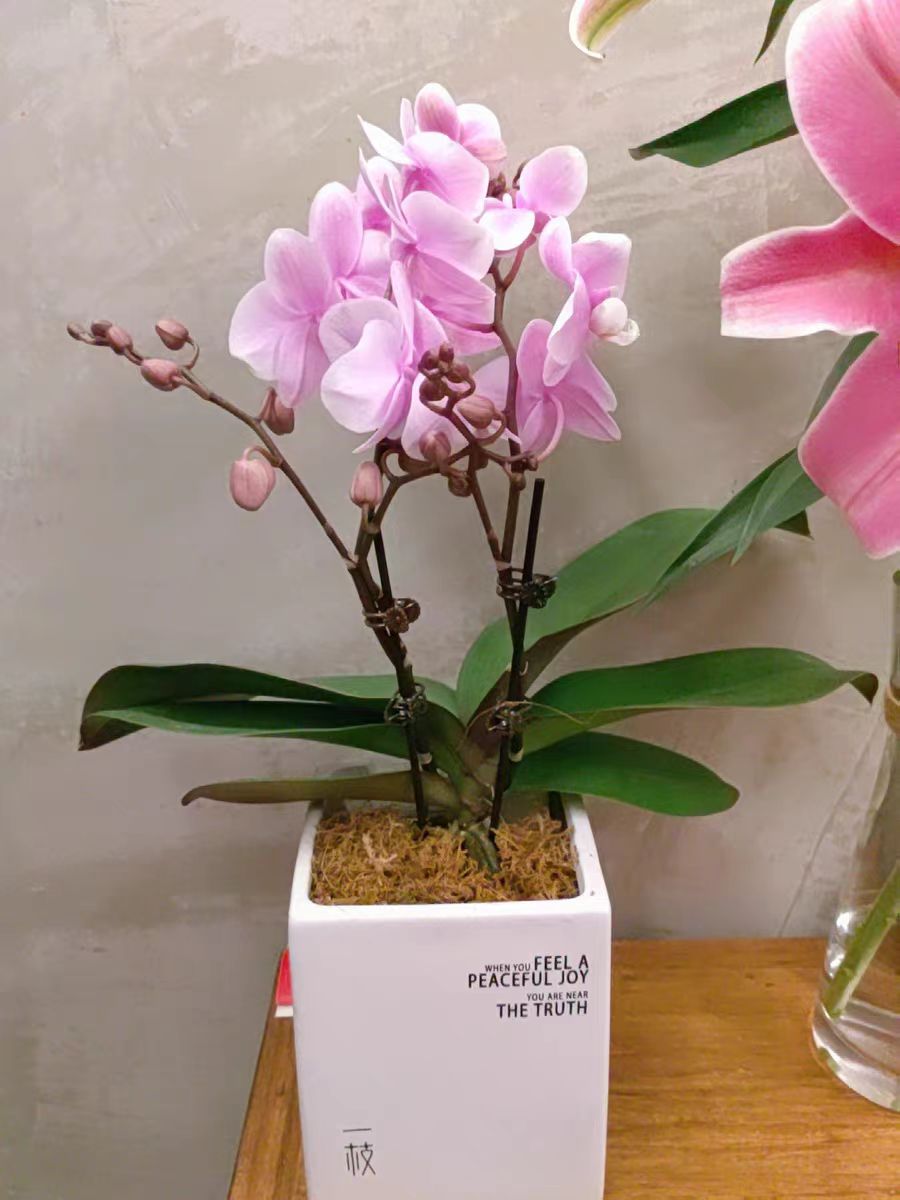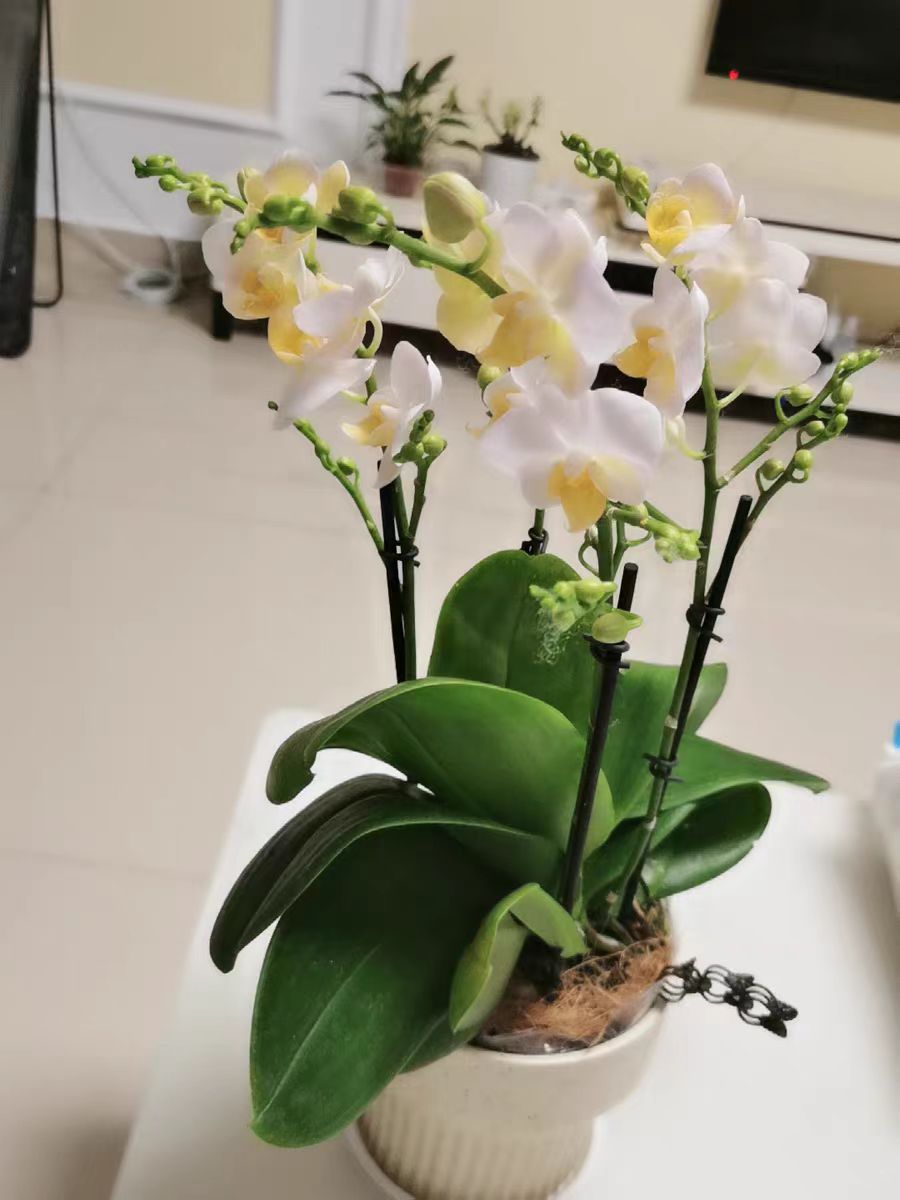What should we do if the roots of Phalaenopsis rot during its blooming period?
When Phalaenopsis is in bloom, it is really worrying when the beautiful blooming period is accompanied by the problem of root rot. Root rot during the blooming period may not only cause the flowers to wither prematurely but also endanger the life of the plant. Therefore, flower growers need to take decisive and correct measures.
To solve the problem, we must first understand the reasons for the root rot of Phalaenopsis during the blooming period. The primary cause is usually excessive watering. During the blooming period, people may water frequently because they hope that the Phalaenopsis can bloom for a long time. However, Phalaenopsis is an epiphytic orchid, and its roots are very sensitive to water. Its fleshy roots have a strong water storage capacity. Excessive water will cause the roots to be short of oxygen, and then lead to rot. In addition, improper selection of the planting medium can also cause root rot. For example, if soil with poor air permeability is used, the roots cannot breathe freely. When the oxygen demand of the plant increases during the blooming period, the roots are likely to be in a harsh environment and gradually rot. Excessive fertilization or too high a concentration of fertilizer is also one of the "culprits". Fertilizing during the blooming period is originally to supplement nutrients, but if it is not well controlled, the fertilizer will burn the roots, damage the normal function of the roots, and lead to root rot.
Once it is found that the roots of Phalaenopsis rot during the blooming period, immediate action must be taken. The first step is to take the plant out of the pot for inspection. Carefully take the Phalaenopsis out of the flower pot, and the movement should be gentle to avoid damaging the healthy roots and flowers. After taking it out of the pot, gently shake off the planting medium attached to the roots and carefully observe the condition of the roots. The rotten roots usually change color to a darker shade, showing brown or black, and have a soft texture, while the healthy roots are white and tough.
Next is to trim the rotten roots. Prepare a sharp and disinfected pair of scissors and cut off the rotten part completely until the healthy root tissue is exposed. Wipe the scissors with alcohol each time after cutting to prevent cross-infection. After trimming, soak the roots of the Phalaenopsis in a diluted carbendazim solution for about 20 - 30 minutes for sterilization. This step can effectively prevent pathogens from further invading the plant.
After dealing with the roots, it is necessary to replant the plant. First, place the Phalaenopsis in a cool and ventilated place to dry the roots. After the surface of the roots is slightly dry, select a suitable planting medium and repot it. The new planting medium should have good air permeability and drainage. Materials such as sphagnum moss and bark pieces are good choices. The sphagnum moss needs to be soaked and wrung out before use, and some perlite can be appropriately added to the bark pieces to increase air permeability. Plant the treated Phalaenopsis in the new planting medium, and pay attention not to plant it too deeply, allowing the roots to stretch naturally.
After the planting is completed, the subsequent maintenance is also crucial. Watering should be done carefully, following the principle of "water only when it's dry, and water thoroughly when watering". Since the roots are damaged at this time and their water absorption capacity is weak, excessive water is likely to cause root rot again. You can judge whether to water by observing the dryness and wetness of the planting medium. Insert your finger 2 - 3 centimeters into the planting medium, and water it when it feels dry. Fertilization should also be suspended. Wait until the plant resumes growth and new roots emerge, and then apply thin fertilizers frequently to supplement nutrients. Place the Phalaenopsis in a place with bright light but no direct light, keep the environment well-ventilated, and control the temperature between 18 - 25°C to create a suitable environment for its recovery.
Although root rot of Phalaenopsis during the blooming period is a thorny problem, as long as we master the correct treatment methods and take timely action, and treat each step carefully, from inspection, trimming, disinfection to replanting and subsequent maintenance, we can help it get through the crisis, let the flowers continue to bloom, and the plant regain its vitality.
What should we do if the roots of Phalaenopsis rot during its blooming period?

Share with
Tagged in :




Leave a Reply